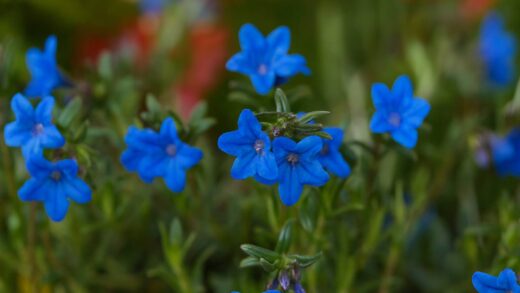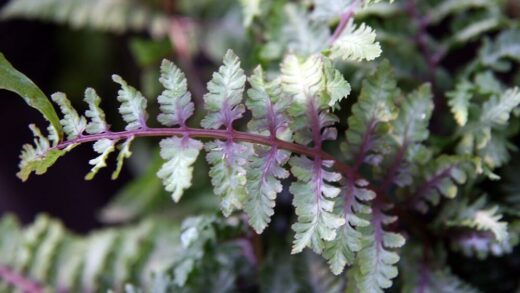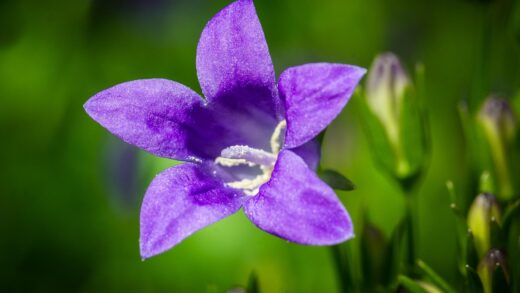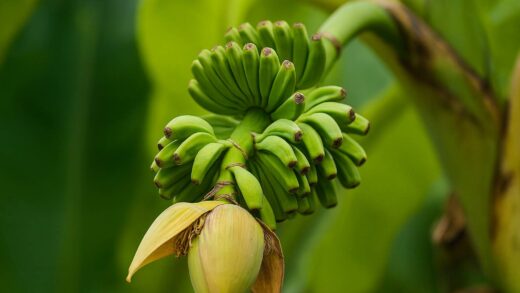Understanding and meeting the water requirements of gladiolus is absolutely essential for their health, growth, and the production of high-quality flowers. Water is a critical component in nearly every physiological process of the plant, from photosynthesis to nutrient transport and maintaining turgor pressure in the cells. Gladioli require a consistent and adequate supply of moisture throughout their active growing season, but they are also highly susceptible to problems caused by excessive water and poor drainage. Therefore, achieving the right balance—providing sufficient water without creating waterlogged conditions—is the primary goal of any effective irrigation strategy for these stunning plants.
The need for water is most critical during several key stages of the gladiolus life cycle. The first is shortly after planting, as the corm begins to develop its root system. Consistent moisture at this stage encourages rapid and extensive root growth, which is the foundation for a healthy plant. The second critical period is when the plant is rapidly growing its foliage and, most importantly, when the flower spike is developing. Water stress during this phase can result in stunted growth, weakened stems, and a significant reduction in the size and number of flowers.
The amount of water a gladiolus plant needs is not static; it varies depending on several factors, including the stage of growth, soil type, and prevailing weather conditions. In general, gladioli benefit from receiving approximately 2.5 centimeters of water per week, either from rainfall or supplemental irrigation. During periods of hot, dry, and windy weather, their water needs will increase significantly as moisture evaporates more quickly from both the soil and the plant’s leaves. Conversely, during cool and overcast periods, their water requirements will be lower.
The best way to determine when to water is not by adhering to a strict schedule, but by monitoring the condition of the soil. The soil should be kept consistently moist, but not saturated. A practical method is to check the soil moisture at a depth of a few centimeters; if it feels dry to the touch, it is time to water. This approach ensures that the plants receive water when they actually need it, preventing the common problems of both under-watering and over-watering, and promoting a healthy environment for the root system to thrive.
Principles of effective irrigation
Effective irrigation for gladiolus is based on principles that aim to deliver water efficiently to the root zone while minimizing waste and reducing the risk of disease. It’s not just about how much water is applied, but also how and when it is delivered. The primary goal is to provide deep, infrequent waterings rather than shallow, frequent ones. This encourages the plant to develop a deep and extensive root system, making it more resilient to drought and better able to access nutrients from a larger volume of soil.
More articles on this topic
Deep watering involves applying enough water in a single session to moisten the soil to a depth of at least 15 to 20 centimeters, which encompasses the entire root zone of the plant. This can be achieved by using a soaker hose, drip irrigation, or simply by letting a hose run slowly at the base of the plants for an extended period. This method ensures that the water penetrates deep into the soil profile rather than just wetting the surface. Shallow watering, in contrast, only moistens the top few centimeters of soil, which encourages the development of a shallow root system that is more vulnerable to drying out.
The timing of irrigation is another crucial principle. It is always best to water gladiolus early in the morning. This provides the plants with the water they need to get through the heat of the day and minimizes water loss through evaporation. Watering in the morning also allows any moisture that gets on the foliage to dry quickly as the sun rises, which is a key strategy for preventing the development and spread of fungal diseases like rust and botrytis, which thrive in damp conditions. Watering in the evening is less ideal, as the foliage may remain wet overnight, creating a perfect environment for pathogens.
Mulching is a practice that works in tandem with effective irrigation. Applying a 5 to 8-centimeter layer of organic mulch, such as straw, shredded bark, or compost, around the base of the gladiolus plants has multiple benefits. Mulch helps to conserve soil moisture by reducing evaporation from the soil surface, which means you may need to water less frequently. It also helps to suppress weed growth, and as the organic material breaks down, it improves the soil structure and fertility. This simple step can make your irrigation efforts more effective and contribute to the overall health of the plants.
Water needs at different growth stages
The water requirements of a gladiolus plant are not constant throughout its life cycle; they fluctuate according to its stage of development. Recognizing and responding to these changing needs is a hallmark of skilled cultivation. Providing the right amount of water at each specific growth stage ensures that the plant has the resources it needs to perform its physiological functions optimally, from initial sprouting to corm development after flowering.
More articles on this topic
In the initial stage, from planting until the shoots emerge, the corms do not require a great deal of water. The soil should be kept only slightly moist to prevent the corm from desiccating, but excessive watering at this point can easily lead to rot before the plant has even had a chance to grow. Once the shoots have emerged and the first few leaves begin to develop, the plant’s water needs start to increase as it builds its foliage and root system. During this period of vegetative growth, a more regular watering schedule should be established to maintain consistent soil moisture.
The most critical period for water is from the time the flower spike begins to emerge from the leaves until the plant has finished blooming. This is the stage of peak water demand. Any significant water stress during this time can have a detrimental effect on the quality of the flowers. It can lead to shorter spikes, fewer florets, smaller individual blooms, and can even cause the buds to wither before they open. During this phase, it is crucial to monitor soil moisture closely and provide deep, consistent watering, ensuring the plants receive the equivalent of at least 2.5 centimeters of water per week.
After the blooming period is over, the plant’s water requirements begin to gradually decrease. However, it is a mistake to stop watering completely as soon as the flowers fade. The plant’s leaves still need to photosynthesize to produce the energy that will be stored in the new corm for the following year’s growth. Continue to water the plants, albeit less frequently, keeping the soil moderately moist until the foliage begins to naturally yellow and die back in the autumn. This ensures the corm is fully “charged” before it enters its dormant period.
The impact of soil type on watering
The type of soil in which gladioli are planted has a profound impact on their watering needs and the overall irrigation strategy. Different soil types have vastly different properties regarding water retention and drainage, which directly affects how much water is available to the plant’s roots and for how long. Understanding the characteristics of your garden soil is fundamental to developing an appropriate watering routine that prevents both drought stress and waterlogging.
Sandy soils are composed of large particles, which create large pores between them. This structure results in excellent drainage, but also very poor water retention. Water moves through sandy soil very quickly, and it dries out rapidly, especially during warm and windy weather. If gladioli are planted in sandy soil, they will require more frequent watering than if they were in a heavier soil type. While the risk of corm rot is lower, the risk of drought stress is significantly higher, so constant vigilance is required to maintain adequate moisture levels in the root zone.
Clay soils are at the opposite end of the spectrum. They are made up of very fine particles, which results in small pore spaces and a dense structure. Clay soils can hold a large amount of water, but they drain very slowly. This can be problematic for gladioli, which are highly susceptible to rot in saturated conditions. When watering gladioli in clay soil, it is crucial to do so less frequently and to ensure the soil has had a chance to dry out somewhat between waterings. Improving the structure of clay soil by adding significant amounts of organic matter before planting is the most effective way to mitigate this issue.
Loam soils are generally considered ideal for growing gladioli, as they offer a balanced combination of sand, silt, and clay. This composition provides good drainage while also retaining a sufficient amount of moisture and nutrients. Loam soils hold water effectively without becoming waterlogged, creating a stable and forgiving environment for the plant’s roots. Even with ideal loam soil, it is still necessary to monitor moisture levels and water according to the plant’s needs and the weather conditions, but the margin for error is typically wider than with pure sand or clay soils.
Recognizing signs of water stress
Being able to recognize the signs of both under-watering and over-watering is a crucial skill for any gardener cultivating gladiolus. The plant will provide clear visual cues when it is experiencing water stress, and a prompt and appropriate response can often prevent lasting damage. Learning to interpret these signals allows for the fine-tuning of irrigation practices to better meet the plant’s actual needs.
The most common signs of under-watering, or drought stress, often appear first on the foliage. The leaves may begin to look dull, lose their vibrant green color, and may start to wilt or droop, especially during the hottest part of the day. If the stress is prolonged, the tips and edges of the leaves may turn yellow or brown and become dry and crispy. In terms of flowering, drought stress can cause the flower buds to fail to develop properly or to drop off before opening. The flower spikes may be shorter than usual, and the individual blooms smaller.
Over-watering, which leads to waterlogged soil and oxygen deprivation in the root zone, presents a different set of symptoms, though some can be confusingly similar to under-watering. A key sign of excessive moisture is a general yellowing of the lower leaves. The entire plant may appear stunted or lacking in vigor. In severe cases, the base of the stem may become soft and discolored, which is an indication that the corm and roots are beginning to rot. If a plant is wilting even when the soil is wet, it is a strong signal that the roots have been damaged by over-watering and are no longer able to effectively absorb moisture.
To correctly diagnose the problem, it is essential to always check the condition of the soil in conjunction with observing the plant’s symptoms. If the plant is showing signs of stress and the soil is dry several centimeters below the surface, under-watering is the likely culprit. If the plant is wilting or yellowing but the soil is soggy and saturated, over-watering is almost certainly the issue. This simple act of feeling the soil is the most reliable way to distinguish between the two problems and to determine the correct course of action.


















